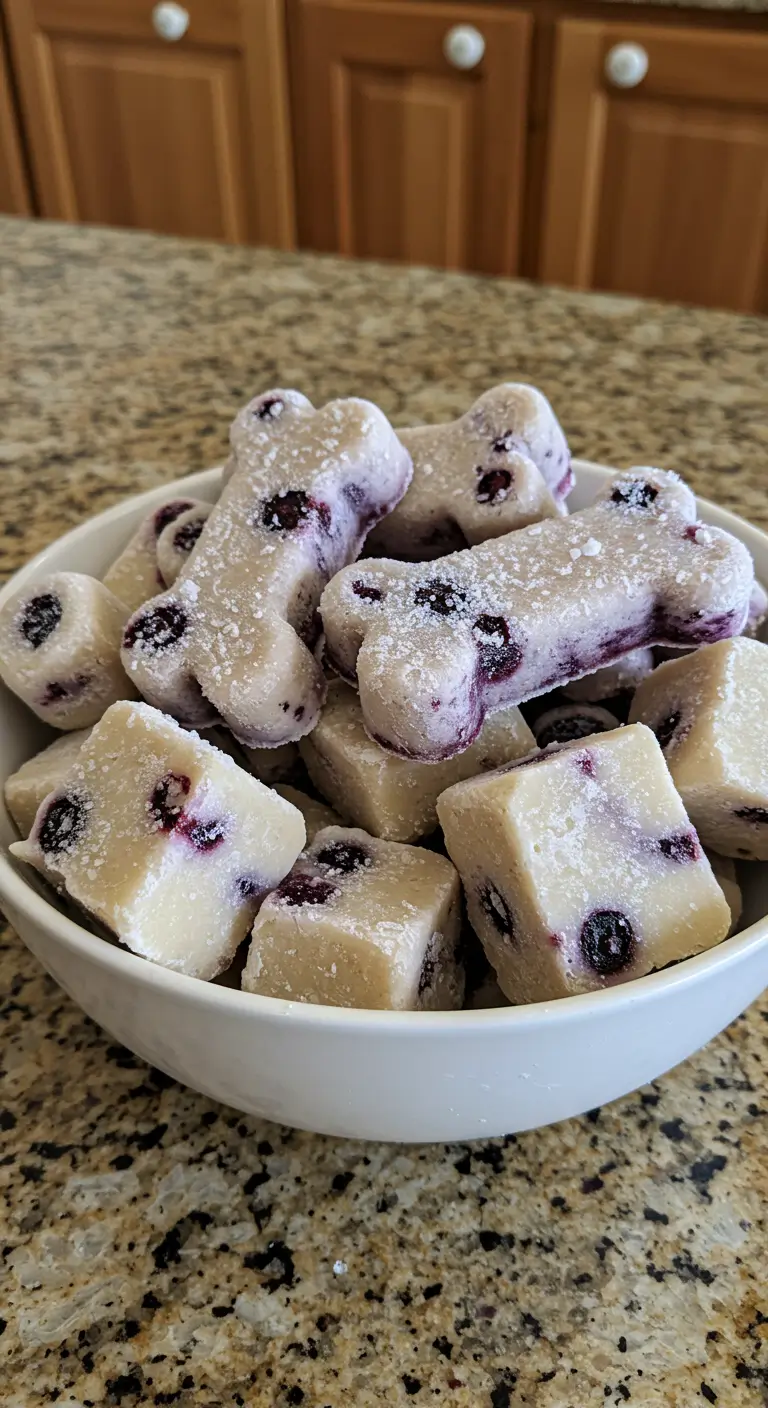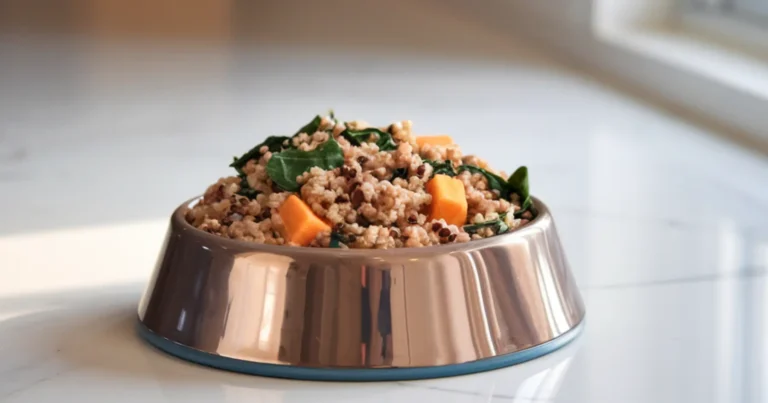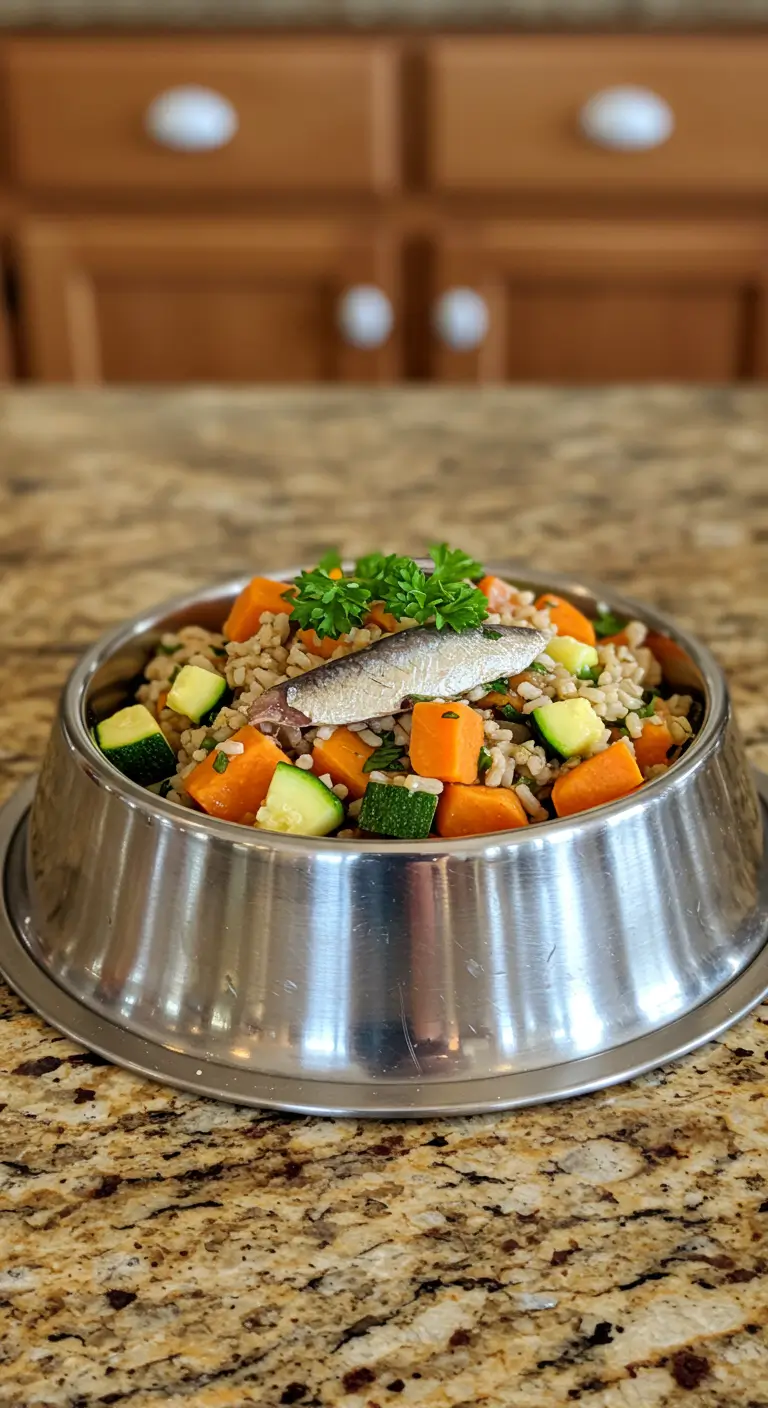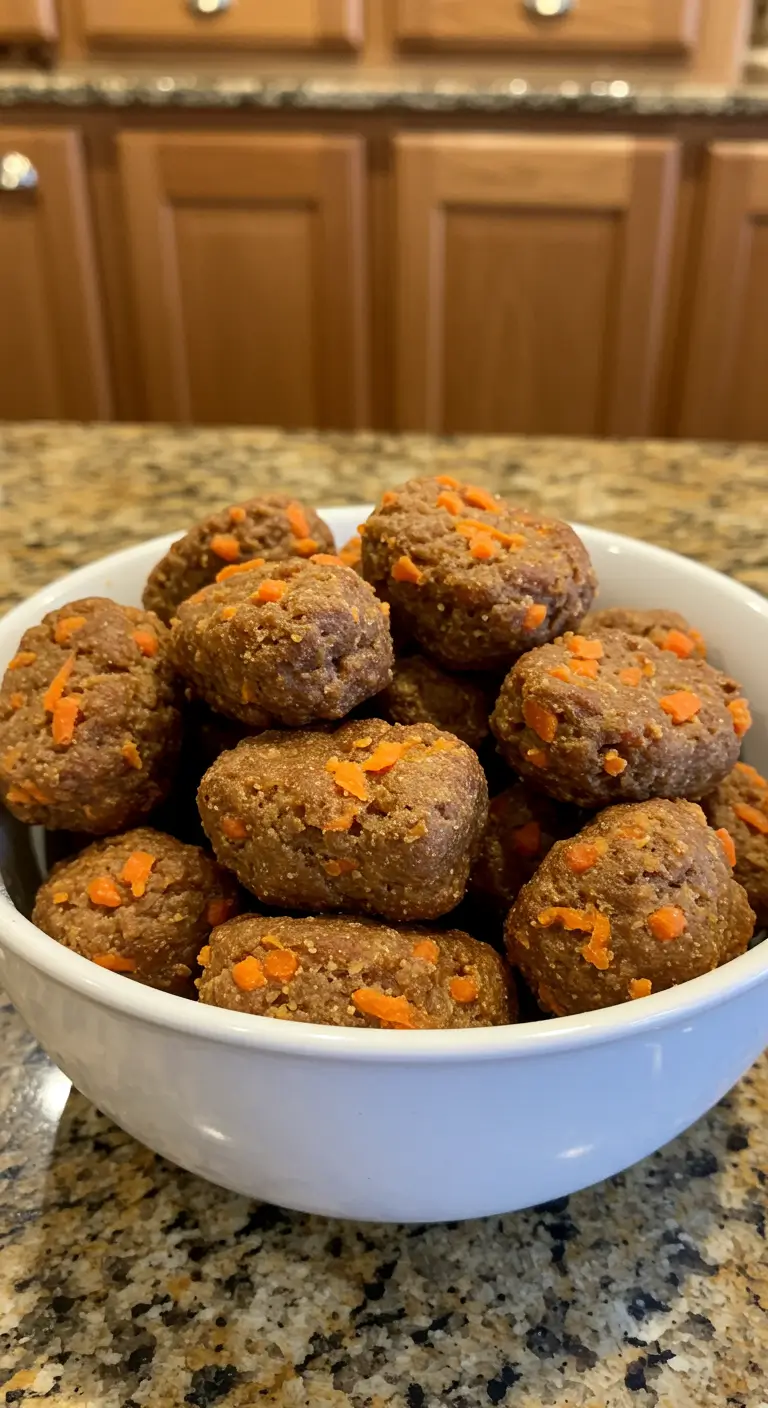Blueberry & Coconut Oil Dog Treats Easy 4-Ingredient Recipe
During my eight years as a canine nutritionist, I’ve witnessed the incredible transformation that quality fats can bring to a dog’s health. Coconut oil dog treats have become my go-to recommendation for pet parents seeking natural ways to support their dog’s skin, coat, and overall wellness. Combined with antioxidant-rich blueberries, these treats deliver nutrition that actually works.
What makes this particular recipe special? Four simple ingredients create something extraordinary. The healthy fats in coconut oil enhance nutrient absorption while blueberries provide brain-boosting antioxidants. These DIY dog treats freeze beautifully and offer the perfect balance of health benefits and irresistible taste.
Table of Contents
Coconut Oil Blueberry Frozen Dog Treats Recipe
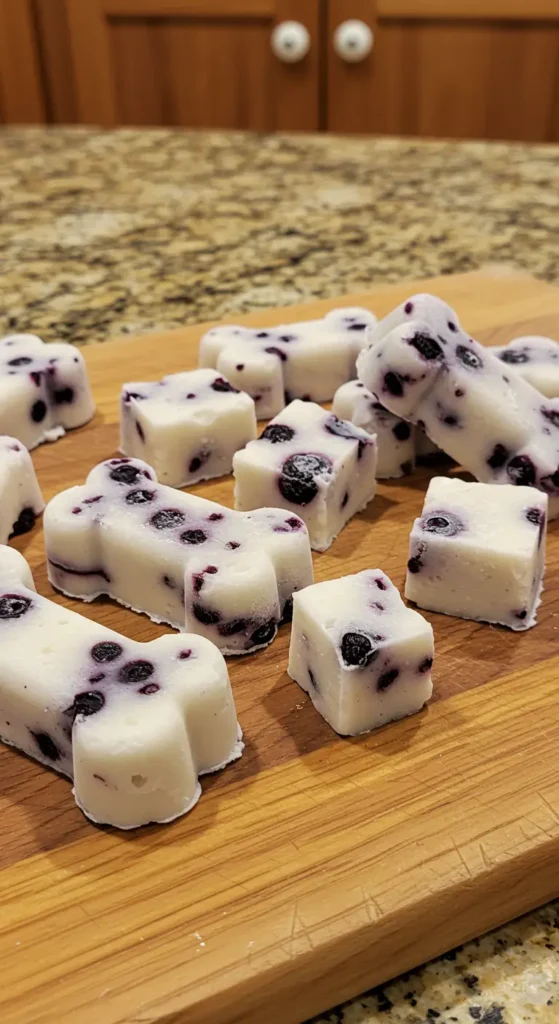
This homemade frozen dog treats recipe transforms pantry staples into powerful nutrition bombs for your furry friend. Fresh blueberries burst with antioxidants while coconut oil provides medium-chain fatty acids that support cognitive function and energy metabolism. These summer dog treats deliver cooling relief with measurable health benefits.
Ingredients
- 1/2 cup organic coconut oil, softened
- 1 cup fresh blueberries (or thawed frozen)
- 1/4 cup plain Greek yogurt (unsweetened, xylitol-free)
- 1 tablespoon raw honey (optional)
Equipment
- Medium mixing bowl
- Fork for mashing
- Silicone ice cube trays or bone molds
- Freezer space
Step-by-Step Instructions
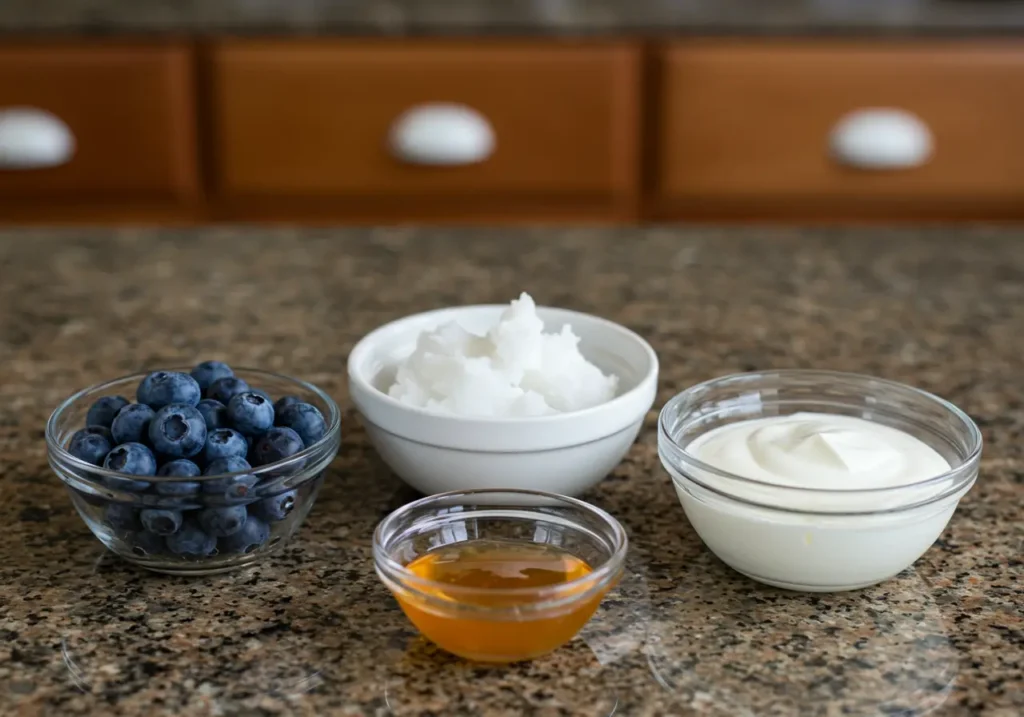
Step 1: Prepare and Combine Base
To make mixing easier, soften the coconut oil to room temperature. Using a fork, gently mash half of the blueberries, leaving some whole to add variation in texture. In your mixing bowl, mix together Greek yogurt, mashed and whole blueberries, and softened coconut oil. Typically, blueberries’ inherent sweetness negates the need for additional honey.
Step 2: Mix and Adjust Consistency
Fold ingredients together until evenly distributed. The mixture should be just moist enough to hold together. If coconut oil seems too firm, warm the bowl slightly with your hands. If the mixture appears too liquid, refrigerate for 10 minutes before proceeding with your coconut oil dog treats.
Step 3: Mold and Freeze
Fill all of the cavities in the silicone molds with the mixture using a spoon. Tap molds gently to eliminate air pockets. Freeze for a minimum of 3 hours until completely solid. These frozen dog treats set faster than fruit-based recipes due to coconut oil’s unique properties.
Serving Guidelines
Start with one small treat per 20 pounds of body weight. Monitor your dog’s reaction to coconut oil, as some dogs require a gradual introduction to avoid digestive upset. These work excellently as high-value training rewards or special occasion treats.
Why Coconut Oil and Blueberries Create Magic
Coconut Oil’s Therapeutic Benefits
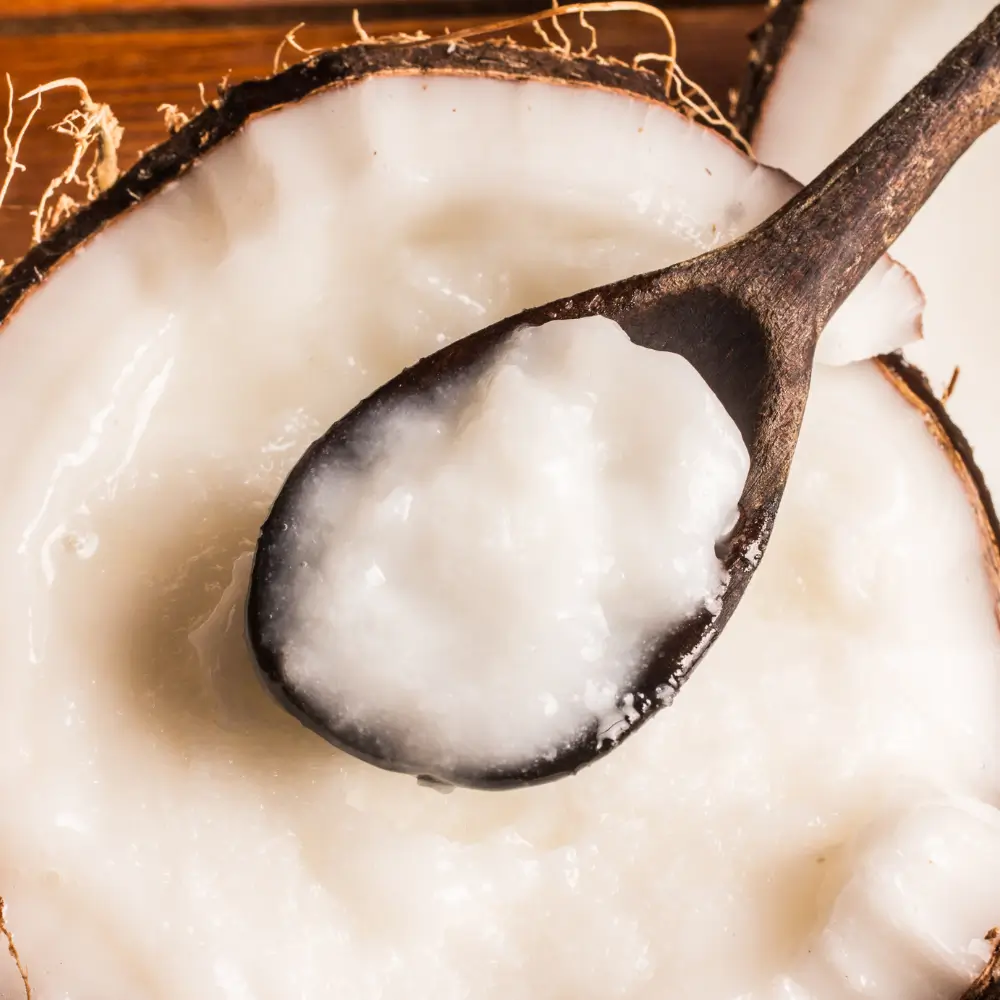
Coconut oil contains lauric acid and caprylic acid, medium-chain triglycerides that convert directly to energy rather than stored fat. Research indicates these compounds support immune function while promoting healthy skin and coat. American Kennel Club notes that coconut oil can improve cognitive function in senior dogs when used appropriately.
Blueberry’s Antioxidant Power

Fresh blueberries rank among the highest antioxidant foods available to dogs. These tiny powerhouses contain anthocyanins that support brain health and may help prevent age-related cognitive decline. The fiber content aids digestive health while natural sugars provide sustained energy for active dogs.
Greek Yogurt’s Probiotic Support

Plain Greek yogurt contributes beneficial bacteria essential for optimal digestive health. While calcium fortifies bones and teeth, the protein content aids in maintaining muscle mass. Always choose varieties without artificial sweeteners, as ASPCA confirms xylitol toxicity remains a serious concern.
Professional Tips for Perfect Results
Coconut Oil Selection Guide
Choose unrefined, virgin coconut oil for maximum nutritional benefits. Refined coconut oil lacks many therapeutic compounds that make these DIY dog treats valuable. Organic options reduce exposure to chemical processing residues, though quality unrefined coconut oil from any source works excellently.
Blueberry Preparation Secrets
Fresh blueberries provide optimal texture and nutrition, though high-quality frozen varieties work well when thawed and drained. Avoid canned blueberries that often contain added sugars or preservatives. Organic blueberries reduce pesticide exposure, particularly important since dogs consume the entire fruit, including the skin.
Temperature Management
Room-temperature ingredients blend more easily than cold components. If coconut oil becomes too liquid during mixing, brief refrigeration restores proper consistency. Summer heat may require storing ingredients in cool areas before the preparation of your summer dog treats.
Storage and Safety Guidelines
Store finished coconut oil dog treats in airtight freezer containers for up to eight weeks. To keep treats from sticking together, place them between parchment paper layers. Label containers with preparation dates since coconut oil can develop off-flavors over extended storage periods.
Remove treats from the freezer 5 minutes before serving to prevent potential tooth sensitivity from extremely cold temperatures. Refrigeration prolongs freshness, but room temperature storage keeps for up to three days.
Why Homemade Surpasses Commercial Options
Mass-produced frozen dog treats often use coconut oil powder or artificial coconut flavoring instead of real oil, missing the therapeutic medium-chain triglycerides that provide health benefits. Commercial versions frequently contain preservatives and stabilizers that serve manufacturing convenience rather than nutritional value.
Creating your own homemade frozen dog treats ensures complete ingredient control while avoiding common allergens found in manufactured alternatives. The cost difference is remarkable. Premium coconut oil treats retail for $20-25 per package while homemade versions cost under $5 for equivalent quantities.
Expand Your Frozen Treat Collection

Ready to diversify your homemade treat repertoire? Our comprehensive collection offers something for every canine preference. Discover our Frozen Blueberry Dog Treats for antioxidant-focused nutrition, or try Frozen Peanut Butter Dog Treats with Banana for protein-packed satisfaction.
Seasonal variety keeps things interesting with our 2-Ingredient Frozen Pumpkin Dog Treats offering fall flavors, while Easy Frozen Apple Dog Treats with Carrot provide year-round appeal. Summer cooling reaches new heights with 5-Minute Watermelon Dog Treats with Mint.
Additional favorites include Pumpkin Apple Pupsicles for autumn indulgence and Strawberry & Banana Frozen Bites for sweet summer satisfaction.
For comprehensive seasonal planning, explore our complete guide 8 Refreshing Frozen Dog Treats for Hot Summer Days featuring additional cooling recipes perfect for hot weather relief.
Safety Considerations for Coconut Oil Treats
To avoid upset stomachs, especially in dogs with sensitive stomachs, gradually introduce coconut oil. Start with quarter portions and monitor for loose stools or increased bowel movements. Most dogs adapt quickly, but individual tolerance varies significantly.
Never use coconut oil products containing additives, flavorings, or preservatives. Pet Poison Helpline emphasizes that pure coconut oil is safe for dogs, but processed versions may contain harmful compounds.
Blueberries are generally safe for all dogs, though large quantities can cause digestive upset due to natural fruit sugars. Remove any moldy or overripe berries before use, as spoiled fruit can cause serious health issues.
Final Thoughts
These coconut oil dog treats represent the perfect intersection of nutrition science and practical pet care. After years of formulating canine diets, I’ve learned that the most effective supplements often come disguised as delicious treats. Your dog gets cognitive support, immune boosting, and pure enjoyment all in one frozen package.
The beauty lies in simplicity. Four ingredients, minimal preparation, maximum impact. Your investment in quality ingredients pays dividends in your dog’s health, energy, and overall well-being.
Have you tried feeding your dog coconut oil? Your experiences and any inventive variations you’ve found would be greatly appreciated! In the comments section below, share your questions and success stories.
Frequently Asked Questions
How much coconut oil is safe for dogs daily?
Most dogs tolerate 1 teaspoon per 10 pounds of body weight daily when introduced gradually. These treats provide controlled portions while avoiding overconsumption. Dogs with pancreatitis or fat-sensitive conditions require veterinary guidance before consuming any high-fat treats including coconut oil dog treats.
Can diabetic dogs enjoy these DIY dog treats?
Coconut oil may help regulate blood sugar in some dogs, but blueberries contain natural sugars requiring consideration. Veterinary nutrition experts recommend consulting your veterinarian before offering fruit-based treats to diabetic dogs. Your vet can determine appropriate portions based on individual management plans.
Why do my frozen dog treats turn white when frozen?
Coconut oil naturally solidifies and may appear white or cloudy when frozen. This normal phenomenon doesn’t affect safety or nutritional value. The treats return to normal appearance at room temperature and maintain full potency regardless of color changes.
Are these summer dog treats suitable for puppies?
Puppies over 16 weeks can enjoy small portions occasionally. Their developing digestive systems require a gradual introduction to new fats like coconut oil. Start with tiny amounts and monitor for any digestive changes before offering regular portions of these homemade frozen dog treats.
How long do coconut oil treats maintain nutritional value?
Properly stored treats retain optimal nutrition for up to eight weeks in freezer conditions. Coconut oil’s natural stability prevents rancidity, though flavor may diminish over extended periods. For best results, prepare smaller batches more frequently rather than large quantities.
Can I substitute other berries for blueberries?
Strawberries, raspberries, and blackberries work excellently in this recipe. Avoid grapes, cherries, or any fruit with pits or seeds. Each berry provides different antioxidant profiles, so variety benefits your dog’s overall nutrition while keeping treats interesting.
What consistency should the mixture have before freezing?
The mixture should hold together like thick frosting without being overly wet or crumbly. Proper consistency ensures easy molding and clean removal from silicone trays. If the mixture seems too soft, brief refrigeration firms coconut oil to an ideal working temperature.
References
Disclaimer: This article is informational. Consult your vet before changing your dog’s diet or introducing new treats, especially if your dog has health conditions or food sensitivities.
Your Dog Tried It? Drop a Review Below!
There are no reviews yet. Be the first one to write one.

